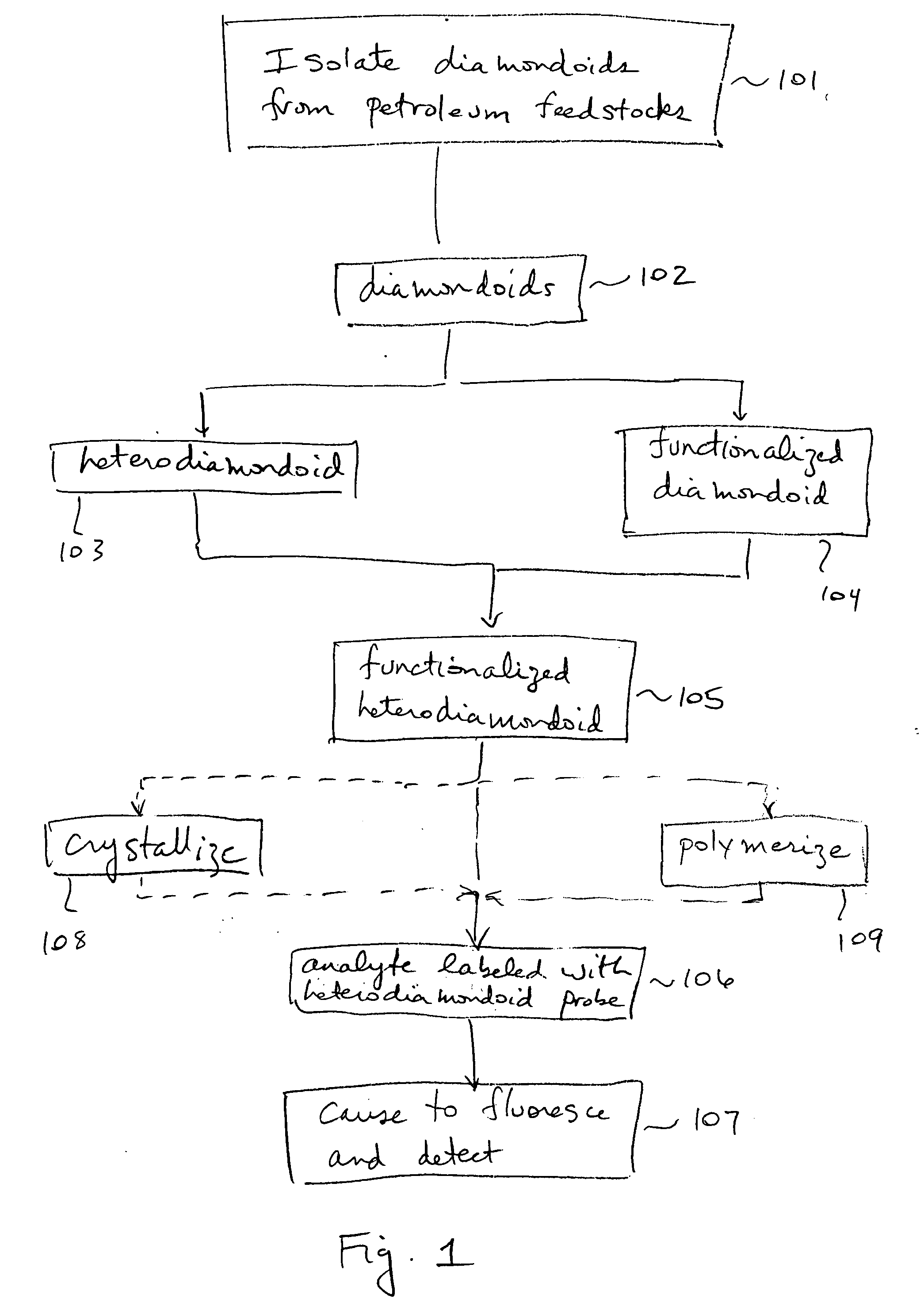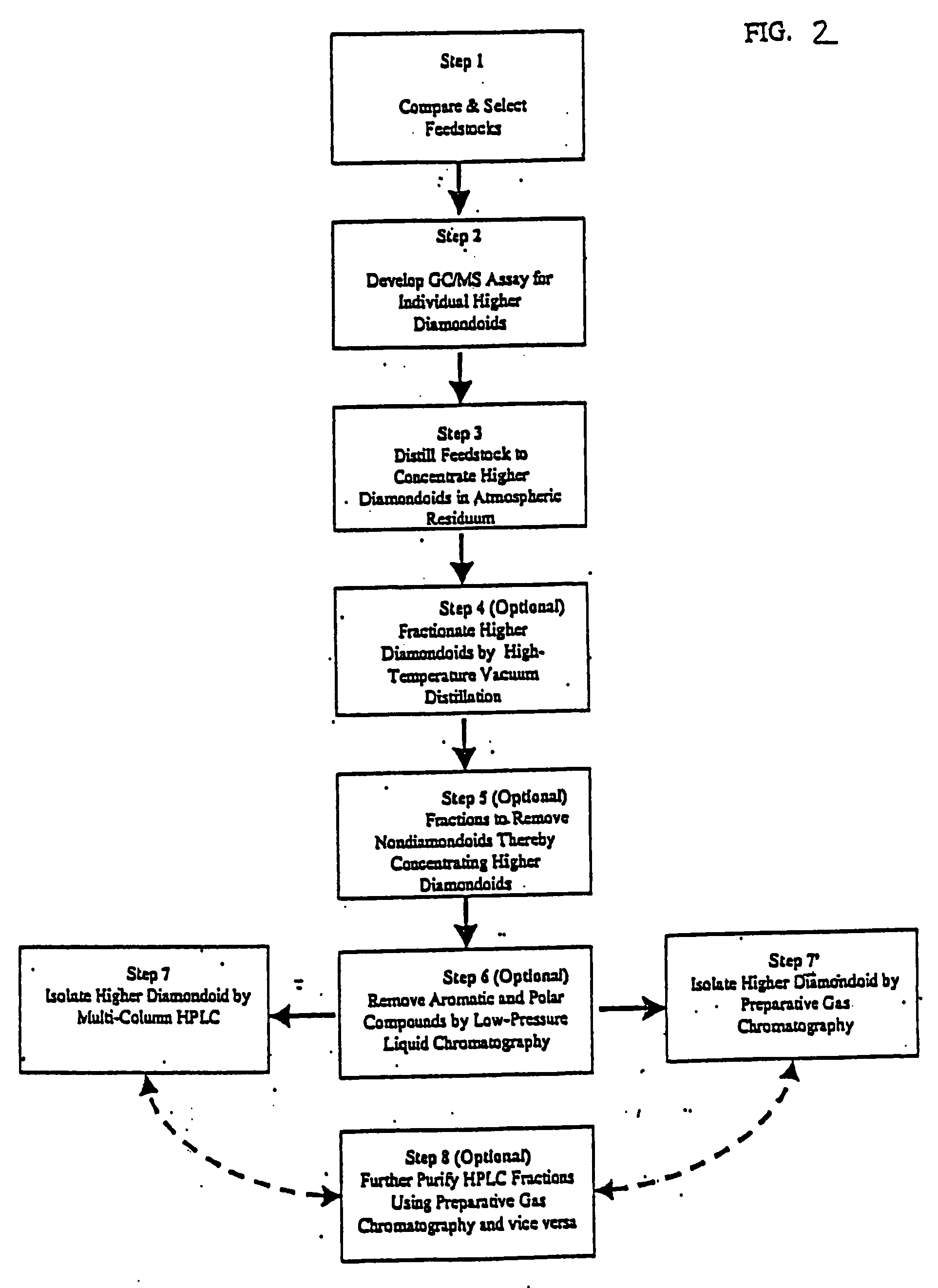Luminescent heterodiamondoids as biological labels
a label and heterodiamond technology, applied in the field of heterodiamondoids as labels, can solve the problems of requiring multiple excitation beams, affecting the color reproduction of dye molecules, and a relatively narrow absorption spectrum of most dye molecules
- Summary
- Abstract
- Description
- Claims
- Application Information
AI Technical Summary
Benefits of technology
Problems solved by technology
Method used
Image
Examples
Embodiment Construction
[0037] Biolabels comprising heterodiamondoid-containing materials may enable the creation of novel biolabels with unique attributes, particularly with regard to size, shape, ease of functionalization, and the fact that they have a precisely determined structure. Since most higher diamondoids are between 1-2 nm in size, the advantages of using them in biolabels relative to conventional materials are that they are potentially smaller than other nanoparticle based labels such as quantum dots or metal nanospheres. Smaller size enables higher diamondoid based biolabels to find more versatile uses in research by enhancing their bio-intake as well as allowing them to bind to smaller bio-molecules. The fact that the luminescing heterodiamondoid-containing materials of the present biolables display different shapes enables the creation of shape-specific biolabels for various purposes. In addition, docking or un-docking events of the biolabels may change their fluorescence characteristics and...
PUM
| Property | Measurement | Unit |
|---|---|---|
| Energy | aaaaa | aaaaa |
| Energy | aaaaa | aaaaa |
| Energy | aaaaa | aaaaa |
Abstract
Description
Claims
Application Information
 Login to View More
Login to View More - R&D
- Intellectual Property
- Life Sciences
- Materials
- Tech Scout
- Unparalleled Data Quality
- Higher Quality Content
- 60% Fewer Hallucinations
Browse by: Latest US Patents, China's latest patents, Technical Efficacy Thesaurus, Application Domain, Technology Topic, Popular Technical Reports.
© 2025 PatSnap. All rights reserved.Legal|Privacy policy|Modern Slavery Act Transparency Statement|Sitemap|About US| Contact US: help@patsnap.com



